Gaillardia perennial: description and varieties, planting and care

With the onset of May days, Gaillardia begins to bloom in the gardens. Large flowers of all shades of golden-red, ranging from the color of noble bronze to dark carmine, resemble the bright traditional outfits of the inhabitants of the American mainland, where this plant comes from. The flower got its name in honor of the French philanthropist, lover of botany, Gaillard de Charentono, who lived in the 18th century.
Peculiarities
The colorful Gaillardia is closely related to asters and is grown in annual and perennial varieties. Gaillardia beautiful refers to annual species, while perennials include all varieties of spinous varieties and hybrids.
Gaillardia perennial looks like a spreading bush with light green leaves covered with a light downy. Depending on the variety, the leaves of the plant can be narrow, like a lancet, or resemble an elongated shoulder blade. On the same plant, the edges of the green leaves can be carved, but the closer to the buds, the narrower and smoother the shape of the leaf plate becomes. Another feature of the leaves: those that are located on the stems are sessile, and the lowest ones, forming a basal rosette, are petiolar.



During flowering, the spreading Gaillardia bush resembles a round basket, completely covered with large bright flowers. The height of the peduncle in the spinous variety ranges from 0.35 m to 0.75 m, hybrids can be of different sizes: from dwarfs and semi-dwarfs, about 0.25 m high, to rather tall bushes, the buds of which open at a height of about 0.9 meters over the ground.
The Gaillardia flower looks like a bright sun, consisting of a dense large core surrounded by a row of petals, often having a two-color color, reminiscent of tongues of flame. There are simple, semi-double and terry types:
- simple flowers have one or two rows of reed or funnel-shaped petals with a carved top;
- semi-double inflorescences already adorn more than two rows of petals around the core;
- double flowers resemble fireballs on high legs, formed from petals in the form of a high funnel.
The perennial is unpretentious in its habitat and drought-resistant, which is very good for beginners in floriculture and those who do not have the opportunity to constantly monitor the state of the flower garden.



Types and varieties
The species diversity of Gaillardia is small, as is the number of varieties available. Now there are just over 20 species of this vibrant plant.
Spinous
A perennial of natural origin, the spinous or large-flowered Gaillardia is native to the North American continent. Tall erect peduncles with a slight bend at the roots proudly bear large bright flowers up to 12 cm in diameter. In order for a flowering bush to have a neat appearance, the plant requires a mandatory garter. The most common varieties of large-flowered Gaillardia.
- Dazzler. Translated from English means "Dazzling". Plants of this variety, decorated with simple flowers with a bright red core, surrounded by lingual petals of a deep red hue with a yellow border, are quite consistent with their name.


- Wirral Flame. The color of this variety resembles dark orange tongues of flame with large golden sparks at the ends, surrounding the ruby heart of a flaring fire.

- Croftway yellow... One of the few monochromatic varieties with pure yellow petals around the golden center.


- Mandarin... Semi-double bud, consisting of several rows of simple ligulate petals, the color resembling the color of the tangerine peel, which is why the variety got its name. The heart of the bud is dense, dark brown in color, with a yellow border.

- "Oriental patterns"... A bush of more than 0.6 m in height with large flowers with a diameter of about 11 cm during flowering resembles a bright oriental carpet, collected from flowers, whose petals are rich copper-red with a wide bright yellow border. The bard tonality of the core is diluted with yellow blotches;

- "Krasava". The tall bush is dotted with large baskets of semi-double flowers of variegated color. There are yellow, copper-red, fiery orange inflorescences with a core of purple-yellow tubular petals.

- "Amber"... A tall perennial with large amber-yellow simple flowers, ideal for decorating flower beds and for creating bouquets.
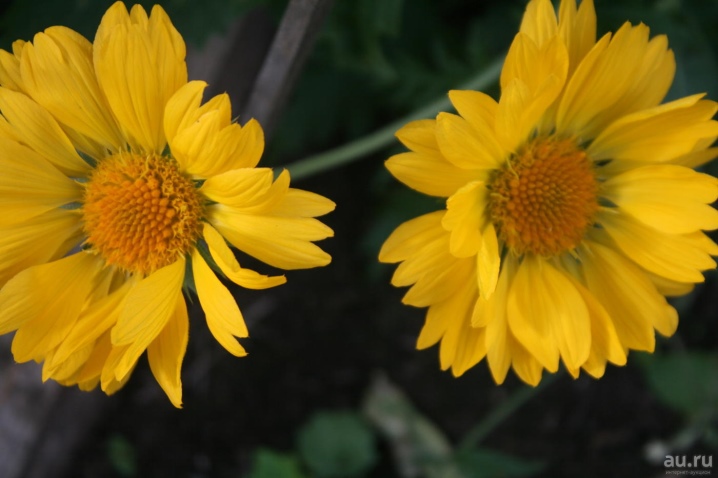
Hybrid
Gaillardia hybrid varieties are obtained by crossing the spinous with the beautiful annual or with other hybrids. Among the artificially obtained varieties, you can find both dwarfs and giants. The most common hybrid varieties are as follows.
- "Arizona Sun". A dwarf variety (the height of the bush is about 20 cm), characterized by long flowering with a very short dormant period, which gives the impression that the bush is covered with bright large flowers from spring to the first frost.


- "Arizona Red"... A dwarf bush, a quarter meter high, decorated with red flowers with a faint yellow border. The core of the flower is red-yellow.

- "Kobold". Gaillardia of this variety is short, only about 35 cm high. Large buds with yellow petals and red edging are located on branched stems.

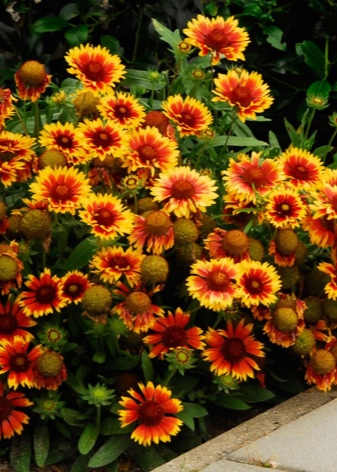
- "Zone". A tall variety with flowers about 10 cm in diameter, rising above the ground to a height of more than half a meter. The red-yellow core of the bud is surrounded by golden-red and dark-gold reed petals.

- "Burgunder" or "Burgundy" is distinguished by its large colors, shades reminiscent of the color of Burgundy red wine with golden sparkles. A tall hybrid, about 70 cm tall, needs a garter.

- Golden Gobin. An undersized hybrid with bright golden-yellow flower baskets.

- Tokajer. The plant more than 70 cm tall with large fiery orange inflorescences is well suited for creating bouquets, as it retains its fresh appearance for a long time after cutting.


- "Primavera". A short plant with the largest number of peduncles on one bush.
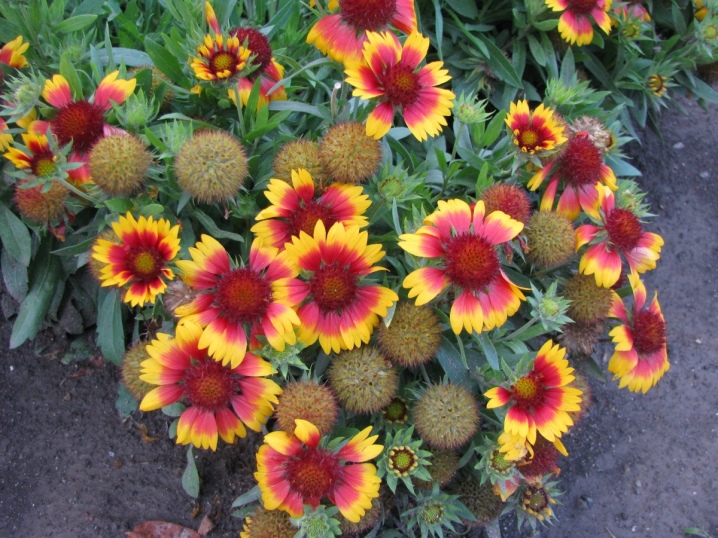
How to plant?
Perennial Gaillardia is an unpretentious plant, so there are no particular difficulties in choosing a place for it. The only thing to remember: the plant is light-loving and does not tolerate any shading well. Therefore, you should avoid planting perennials in the shade of trees, high solid fences or buildings on the shady side.
Soils for healthy plant growth should be light and moderately dry. The flower does not tolerate soil rich in humus, excessively wet, with high acidity.
Having decided on the landing site, it is worth preparing the soil by introducing a mixture of sand, humus, wood ash and complex fertilizers into the planting holes.

Single plants are planted at a distance of at least 30 cm from each other, but if there is a desire to get a dense, abundantly flowering bush, then you can place up to 4 seedlings in one hole.
Planting of adult seedlings is carried out either in the spring, after the onset of stable heat, or from mid-August to mid-September, so that the seedling has time to acclimatize and take root in a new place before the onset of frost.


How to take care of it properly?
After planting a plant in open ground, it needs care, as for all flowers. For all its unpretentiousness, perennial Gaillardia gratefully responds to timely watering, feeding, and the like., delighting with more lush and long flowering and a neat look.
Top dressing
Growing a plant in one place for more than two years naturally depletes the soil, therefore during the season, Gaillardia must be fed 3 times:
- the first feeding is carried out in the spring with the appearance of buds;
- the second time - during flowering;
- the third and last is given a month before the onset of frost.
As a top dressing, a universal fertilizer for flowering plants is used.

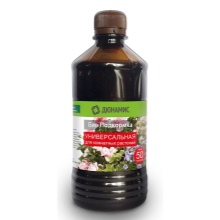

It is important to remember that the use of fresh manure as fertilizer is strictly prohibited, as this can cause the death of Gaillardia.
Watering
Water the plant as needed, avoiding stagnant moisture. Gaillardia is drought-resistant, therefore it easily tolerates a lack of water.
Weeding and loosening the soil
Weeding is a natural requirement for maintaining the beauty of the flower garden. Removing weeds will not only help conserve nutrients, but will also make it easier for air to reach the roots. For the same purposes, loosening the soil in the flower garden will serve.


Pruning and garter
Tall varieties of Gaillardia with heavy large flower caps are prone to falling apart, which gives the flower bed a sloppy look. To avoid this, the bushes must be tied up using supports that may be invisible, or, on the contrary, make them the central part of the composition.
Interestingly, companion plants with a more stable peduncle, for example, irises, can be used as a support for Gaillardia.
Gaillardia seed pods have a decorative appearance, so pruning is not necessary. If desired, they can be removed to extend the flowering period. Pruned testes are often used in flower arrangements as dead wood.


Full pruning of perennials is carried out in the fall, preparing the plant for wintering.
Wintering
Winter is a dormant time for most flowers. Adult Gaillardia bushes tolerate winters well without requiring additional shelter.
Young plants can be covered with leaf litter or spruce branches. Shelter is especially necessary in regions with very low temperatures, as well as in frosty winters with little snow.

Reproduction methods
In order to propagate the plant he likes, the owner can use two methods: sowing by seeds and vegetative.
Seeds
For propagation by seeds, you can use purchased material or collected from the mother plant yourself. But here it is important to remember that hybrid varieties when grown from seed can lose their distinctive properties, returning the characteristics of the mother plants. That's why for propagation of hybrid varieties, it is worth using seed from trusted manufacturers or propagating hybrids only by dividing the bush.
Sowing seeds for seedlings can be done directly in the ground or indoors in early spring.


Perennial seeds are sown in open ground in mid-July. Seeds are scattered over the surface of the prepared soil, slapping slightly. You can sprinkle them with a thin layer of soil, or you can leave them open. As a maintenance, regular moistening of the soil surface is required. The seeds sown in this way will have time to sprout and build up a good root system, which will allow the seedlings to survive the winter and please with flowering with the onset of summer.
The same sowing method is used in spring. Only grown and strengthened seedlings can be transplanted to a permanent place by autumn.
Podzimny sowing requires the obligatory cover of lightly dusted seeds. In the spring, after the emergence of seedlings and the onset of stable heat, the covering material is removed. Follow-up care consists of watering and weeding. By autumn, the grown outlets are transplanted to the place where they will grow for the next 4-5 years.


Sowing seeds in a heated room is carried out in late February - early March. Drainage is placed in the seed boxes, a light substrate from compost, garden soil, sand with the addition of wood ash is poured on top. Seeds are spread over the soil surface without deepening. The surface is sprayed with water and covered with foil or glass. The seed boxes are placed in a bright, cool place out of direct sunlight. The ambient temperature should be no higher than 20 ° -22 ° C.
With the appearance of the first true leaves, the seedlings are planted in separate peat pots, which is very convenient for planting grown seedlings in the ground, since Gaillardia is difficult to transplant at such a young age. The seedlings are kept at a temperature of 18 ° -20 ° C.
With the onset of warm days and the end of the threat of frost, the mature seedlings are planted in a permanent place.


It is important to remember that Gaillardia can multiply by self-seeding if the seeds are not collected in time.
Vegetative way
The most reliable method of reproduction while maintaining the varietal characteristics of perennial Gaillardia is vegetative.
After the plant reaches the age of 4-5 years, the bush needs rejuvenation and transplantation. This is the best time for breeding.
The division of the bush is carried out in the spring, before the onset of the flowering period. The bush taken from the ground along with the roots is divided into several parts so that each delenka has a sufficient number of roots and shoots.

After that, the divisions are planted in the selected places, using the same method as when planting the mother plant.
Those who like to experiment can try to propagate the variety using pieces of large root at least 5 cm long. A healthy root cut into pieces is buried in the ground and covered, creating a greenhouse effect. If successful, green shoots will appear after a while.
Cuttings
Some people try to propagate Gaillardia by cuttings. The success of this operation is unlikely, since the probability of engraftment is no more than 50%. That's why this method may be suitable for those who like to experiment in the garden.
Pieces of shoots 5-10 cm long, cut in March - April, are used as cuttings. Finished cuttings are placed in shallow boxes.

Diseases and pests
Any plant has its own "set" of diseases and pests. Perennial Gaillardia did not escape this either.
The most common cause of plant disease is improper care. Excessive thickening of plantings, stagnation of moisture in the soil cause diseases such as:
- various types of rot;
- powdery mildew;
- rust;
- spotting.
At the initial stage of the disease, the plant can be treated with a solution of potassium permanganate at the rate of 2.5 g per 10 liters of water, or with fungicides. The damaged parts of the plant must be removed. In case of severe infection, the entire plant is dug up and burned. The soil where the diseased plant grew is disinfected.


Of the pests, Gaillardia is most often affected by thrips, whiteflies, aphids and a grinder. For pest control, insecticides such as "Aktara" are used.
Use in landscape design
The beauty Gaillardia easily finds her place in the garden. Low-growing varieties are used to create live borders. Medium-sized plants look good in single plantings. Tall Gaillardia will be a bright addition to a multi-row flower garden.
Bright large Gaillardia inflorescences look good in combination with white, bright blue and yellow flowers, as well as against a background of clean greenery. Companions can be chamomile, irises, lupins, roses, daisies, bells, asparagus.

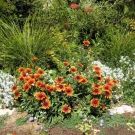




Gaillardia is suitable for use in mixborders and ridges, for decorating alpine slides, rose gardens, stone gardens and flower beds.
See below for an overview of the flower.







































































































The comment was sent successfully.